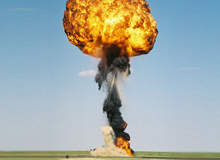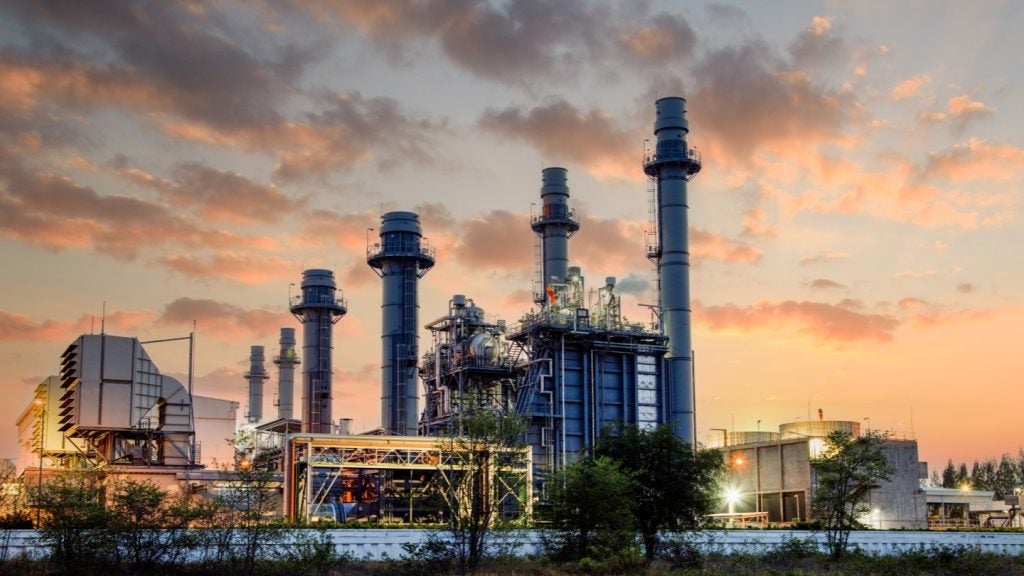
Thorium is considered by many as a potential substitute for uranium in nuclear power generation facilities, and following negative publicity after the meltdown of the Fukushima power plant in Japan, advocates hope it can save the image of nuclear as a truly safe and environmentally friendly alternative to coal power.
The element, discovered in the early 18th century and named after Thor, the Norse god of thunder, is three times more abundant than uranium in the earth’s crust, and on average produces 250 times more energy per unit of weight than uranium does.
Unlike uranium reactors, thorium power stations would produce no plutonium – the crucial catalyst for deadly atom bombs. Furthermore, spent fuel rods are known to be dramatically less radioactive than conventional nuclear waste, making energy production far more environmentally friendly.
Perhaps the most powerful selling point from a safety perspective, however, is that thorium doesn’t continue to react on its own. Thorium requires an accelerator-driven system (or ADS) reactor, which provides an external beam of electrons to start the reaction. Simple removing this beam stops the reaction, and unlike uranium the reaction can’t get out of control.
Despite the positives, relatively little testing has been done. Germany, Japan, Russia, the UK and the US have however been researching thorium based fuel cycles for the past three decades. India has developed a three stage nuclear power programme based on the availability of abundant thorium reserves.
Using detailed research from GlobalData, we examine the current and potential market for this nuclear power house.
How well do you really know your competitors?
Access the most comprehensive Company Profiles on the market, powered by GlobalData. Save hours of research. Gain competitive edge.

Thank you!
Your download email will arrive shortly
Not ready to buy yet? Download a free sample
We are confident about the unique quality of our Company Profiles. However, we want you to make the most beneficial decision for your business, so we offer a free sample that you can download by submitting the below form
By GlobalDataAvailability of thorium resources
Thorium is available in small amounts in most rocks and soils, and it is three times more abundant than uranium.
On average, soils contain six parts per million (ppm) of thorium. The most common source for thorium is monazite, the rare earth phosphate mineral, which normally contains about 12% thorium phosphate.
Australia has the highest thorium resources with 489,000 tons followed by the US with 400,000 tons, Turkey with 344,000 tons and India with 319,000 tons.
The remaining resources are found in countries like Venezuela, Brazil, Norway, Egypt, Russia, among others.
Australia contributes about 18.7% of total global thorium resources, then comes the US with 15.3% and Turkey with 13.2%. India is the fourth largest thorium producing country with 12.2% contribution to global thorium resources. The top four producing countries amount to more than 50% of the world’s thorium resources.
Thorium research and development activities
For the past four decades, many countries across the globe were interested in using thorium as nuclear fuel because of its abundance.
Initially, research and development activities on using thorium were conducted in countries such as Germany, India, Japan, Russia, the UK and the US. Several test reactors in some of these countries were partially or completely loaded with thorium based fuel.
During the period 1967-1988, atom versuchs reacktor (AVR), a nuclear test reactor in Germany with a capacity of 15MW, was operated for almost 750 weeks, using thorium based fuel for 95% of the time. About 1,360kg of thorium was used, mixed with high-enriched uranium.
In Canada, atomic energy of Canada limited (AECL), undertook more than 25 tests in three research reactors and one pre-commercial reactor with fuels combining uranium and thorium.
In India, the Kamini 30kWth experimental neutron-source research reactor, which uses U-233 as nuclear fuel, was started in 1996. This reactor was built next to the 40MWt fast breeder test reactor (FBR), in which thorium was irradiated and the same was used in the Kamini reactor.
Current thorium fuel cycle research activities
In the past, several research and development activities were performed by using thorium based fuel. But that was only limited to a small extent and the research conducted was basic in nature.
At present, several advanced reactor conecepts are used for researching thorium. Some of the recent thorium fuel cycle research activities include the following:
High temperature gas cooled reactors (HTGRs) and the gas turbine-modular helium reactor (GT-MHR) are advanced reactors being developed by General Atomics. The fuel options for this reactor include high-enriched thorium, U-233 and plutonium.
The molten salt reactor (MSR) is an advanced reactor, where molten salt is used as a coolant. The fuel for this reactor can be dissolved enriched uranium, thorium or U-233 fluorides.
The MSR concept was studied in 1960s but is now being revived due to the availability of advanced and sophisticated technology. Some countries such as Japan, Russia, France and the US are aiming to have further developments in the MSR reactor.
AECL is currently conducting research activities on the thorium fuel cycle applications for enhanced candu 6 and advanced candu reactor-1000 (ACR-1000) reactors with 5% plutonium along with thorium. AECL is also working with Third Qinshan Nuclear Power Company (TQNPC), China North Nuclear Fuel Corporation and Nuclear Power Institute of China (NPIC) to develop and demonstrate the use of thorium fuel.
The purpose of this study is to know the commercial and technical feasibility of thorium being used in Candu units. India is currently working on an advanced heavy water reactor (AHWR) design, similar to the Canadian ACR design.
The fuel assemblies for this reactor contain thorium and it is designed for 100 years of operational life.
It is expected to utilise 65% of the energy, and 75% of the power will come from thorium.
Fast breeder reactors (FBRs) and AHWRS play a significant role in India’s three-stage nuclear power program. A 500MW prototype FBR reactor was designed to breed U-233 from thorium.
India’s Plan for thorium power reactors
The Indian nuclear power program was conceptualized based around a unique sequential three-stage program. This sequential three-stage program is based on a closed fuel cycle, where the spent fuel from one stage is reprocessed to produce fuel for the next.
The use of this program will manifold the energy and significantly reduce waste. The first stage consisted of setting up pressurized heavy water reactors (PHWR) fuelled by natural uranium. Currently, the country has 17 PHWR operational reactors. As part of the second stage, India started the FBR program with the fast breeder test reactor (FBTR), at Kalpakkam, which is in the construction phase.
India is focusing on shaping the third stage of their nuclear power program, where thorium will be used as fuel in the near future. The third stage will comprise the use of U-233 based thermal reactors for power generation and efficiently converting thorium-232 to uranium-233.
More Details on the Full GlobalData Report
GlobalData is an industry analysis specialist company providing business information products and services. Its highly qualified team of analysts, researchers, and solution consultants use proprietary data sources, and various tools and techniques to gather, analyse and represent the latest and the most reliable information essential for businesses to sustain a competitive edge.







